So the Imperial’s engine is out, separated from the without-a-doubt destroyed A904 automatic, and on the stand. With nothing to lose, I grabbed the tools and tore into the LA motor. There had to be clues inside as to why the “built 318” I supposedly had on my hands could barely push 160hp on the dyno, and I was determined to find out what the culprit was. Go figure, the block still had another quart of coolant trapped in the water jackets, only coming out when I rotated the engine upside-down. The upper end of the engine looked promising…no sludge, no metal, and all of the valve train looked as good as when it went into the car. Even when I pulled the oil pan, things still looked good: no sludge, no metal, no water mixing in, no nothing. Had I been panicking for no good reason? Read on and find out…
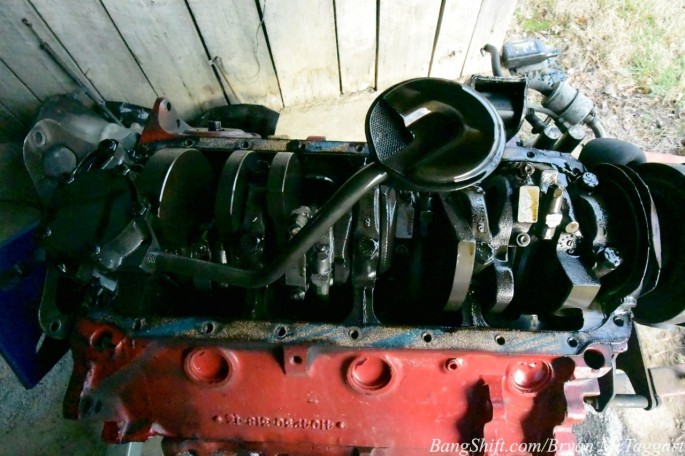
Started from the bottom first. First indications were pretty positive, with nothing really standing out as damaged.
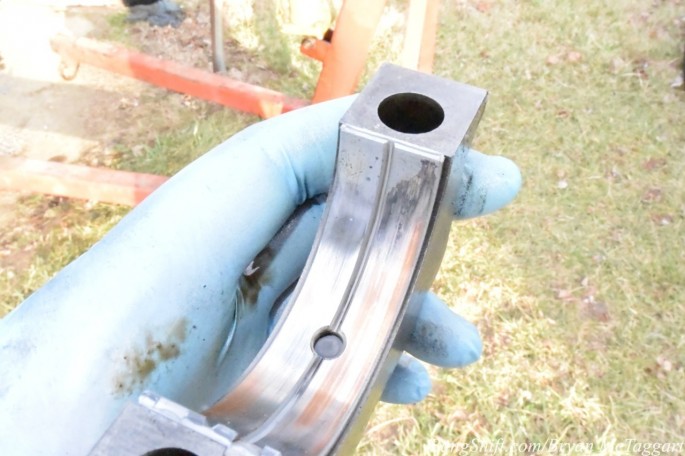
I opened the main caps up one-by-one, from front to back. The first cap looked good. The second one…
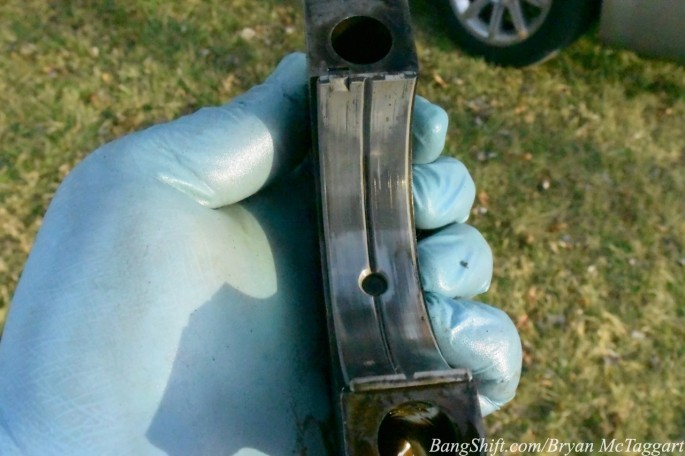
…and fourth ones didn’t. The fifth cap looked good, which is making me suspect the crank of having issues, instead of an oiling issue.
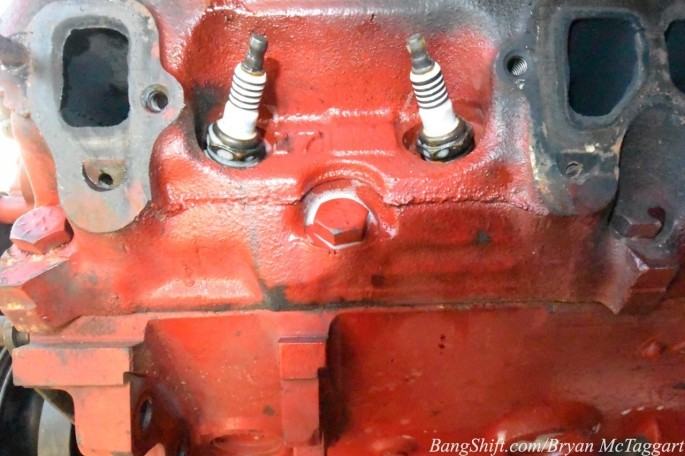
The ports underneath the exhaust ports were for smog equipment and were filled in when the engine was rebuilt. I’m not sure with what, though. Cylinder 1 blew it’s plug out, and #3’s plug fell out when I tapped it with a screwdriver.
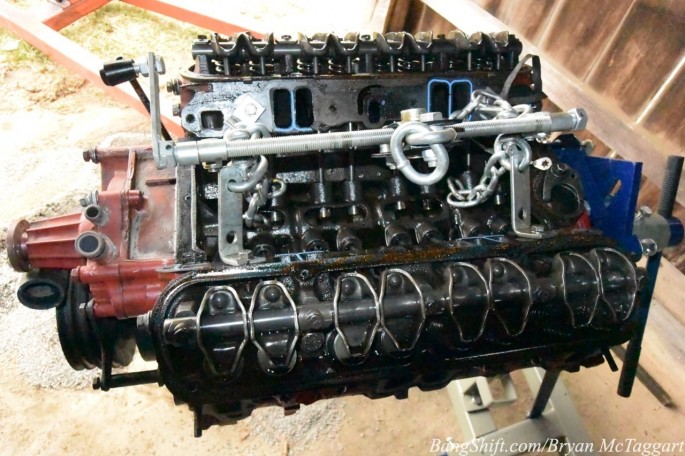
With the bottom end now a concern, it was time to open the upper end. So far, things had been looking really good up here.
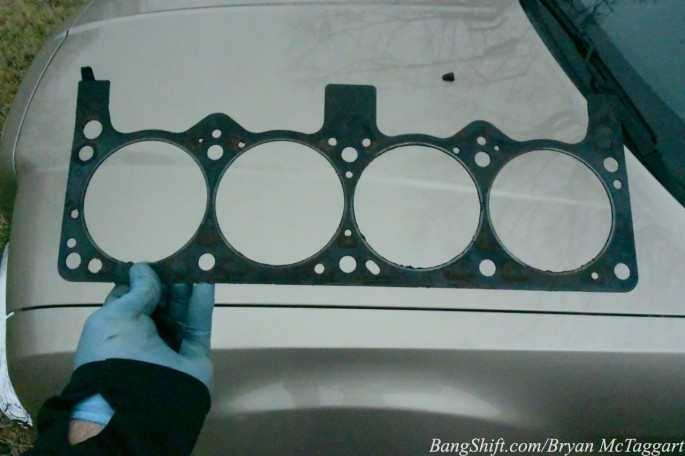
Except for the head gaskets, which I was glad to see had been perfectly fine. I was actually expecting issues with these, and both sides were perfectly fine.
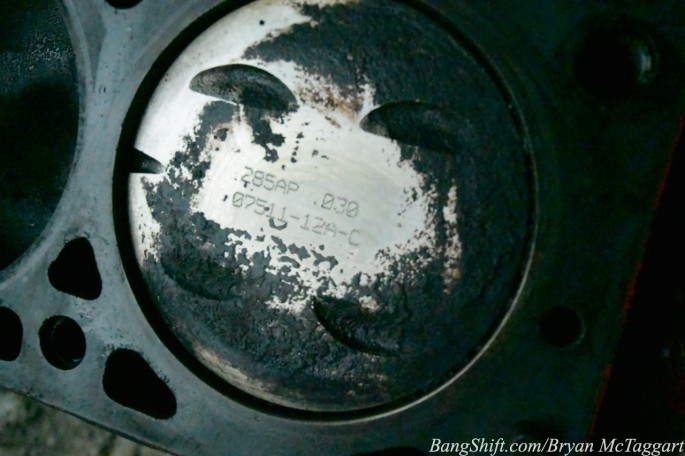
I picked the cleanest piston, and a half-hour later with a wire brush and foaming Gunk I got one answer sorted. A .030 over 318 is a 323, so I’ve been correct all this time.

















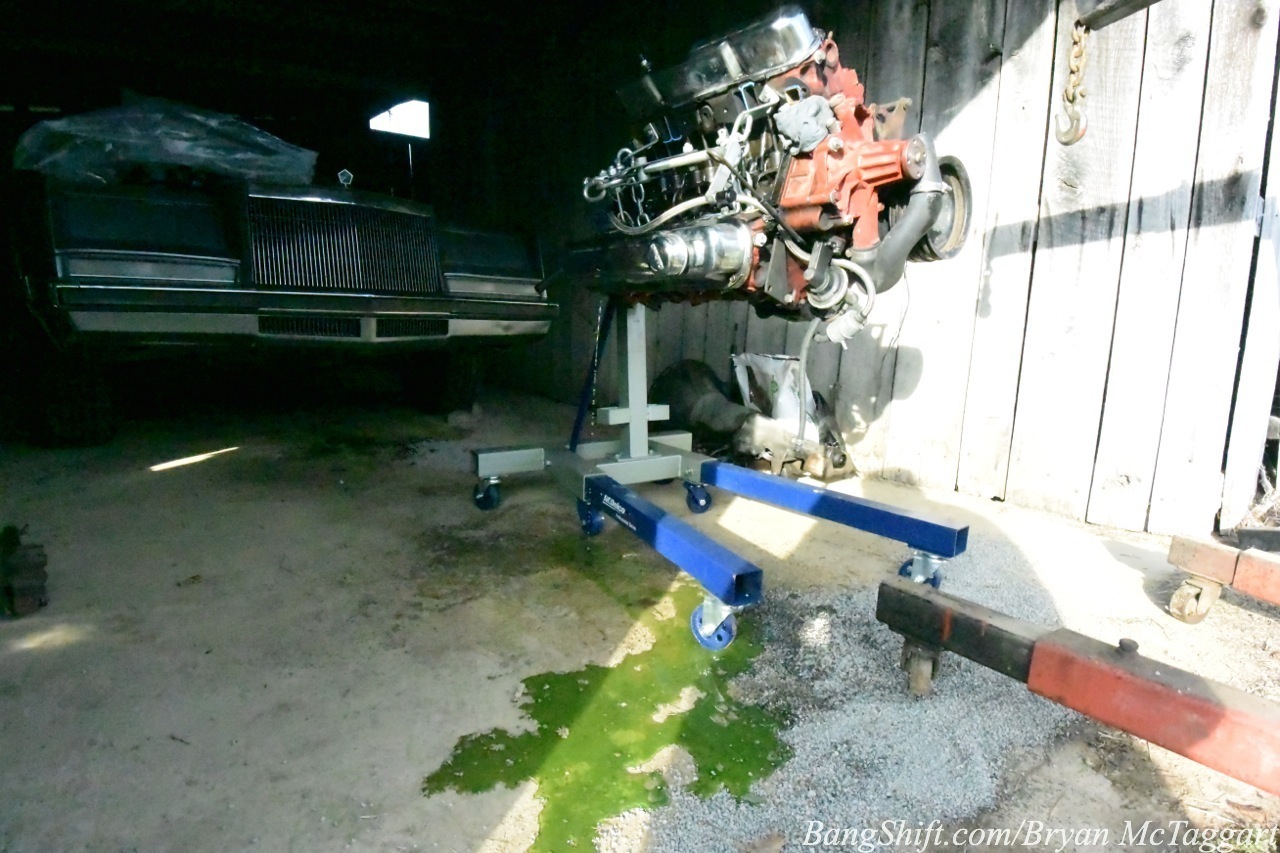
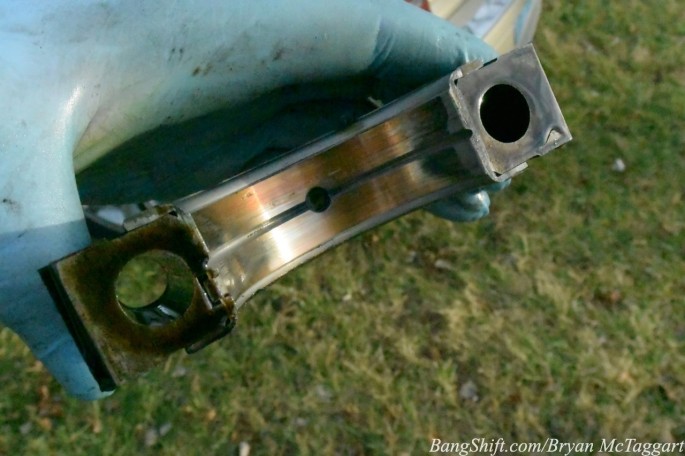
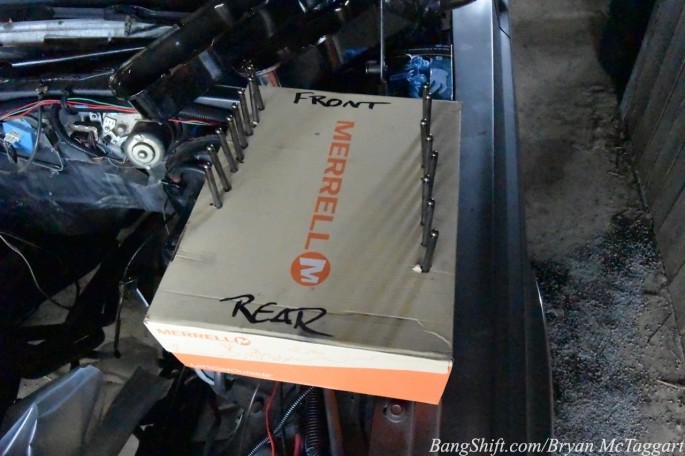
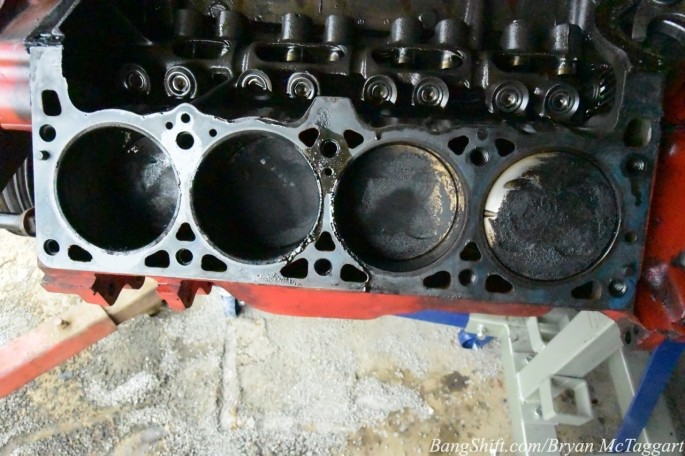
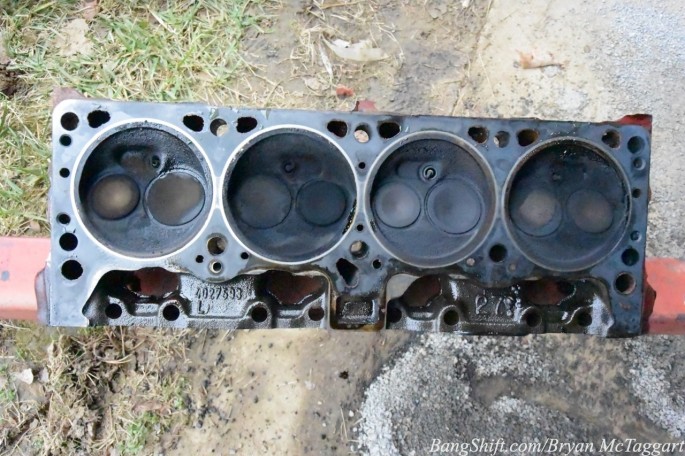
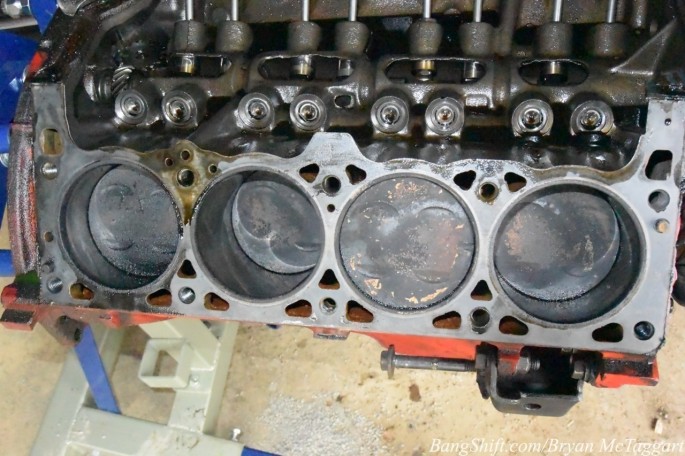
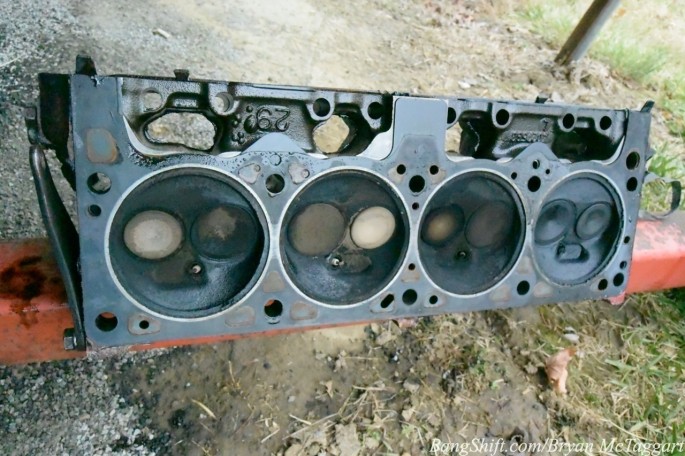
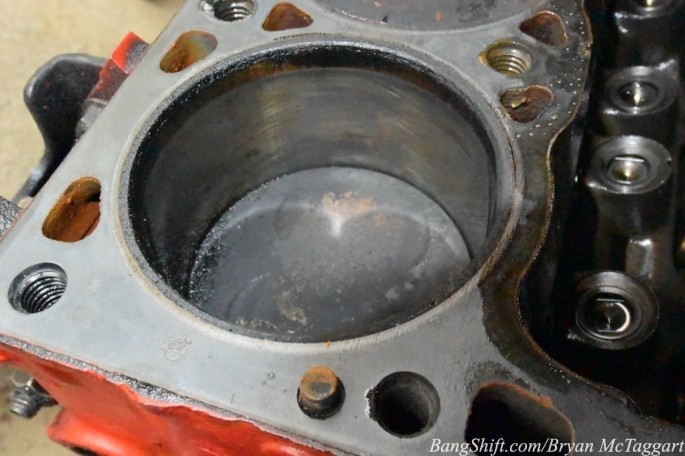





Dude, I’m getting nauseous just reading this. How many miles have you put on it?
Wasn’t that supposed to be either a 340 or a 360?
No, it was supposed to be a 0.030″ 318 but it was supposed to be making 300hp.
It was always a 318 build, but nobody who actually built it (read: not me) could accurately remember the bore. And it’s only got about 20,000-25,000 miles on it.
Damn. Well, at least you have something to keep you busy for awhile!
I talked to a couple friends at work who deal with this. They say it’s either an oiling issue, or a line bore problem. Did you measure your clearances?
The carbon build up on the pistons looks to be from either sucking oil in from lifter valley, intake not sealing correctly. Or, the valve seals are bad. Oil running down valve stems will show the latter. Oil in the intake runners and not on the valve stems will be the intake gasket.
Block is in for measuring now. I didn’t drop the valves, but there were no classic signs of valve seals (smoke on startup)
What about improper ring gap/size? I’m purely talking out my ass here, but wouldn’t that allow oil in the combustion chamber and lose compression, causing it to be down on power?
I use a cardboard box for push rods and lifters every time I pull the engine apart, perfectly legit.
Yeah, I use the same trick for knuckle work on my pickup, bolts and nuts go into the box as they were found on the axle.
I have an old lifter box from Engle cams. Push rods don’t need to stay in order.
Bryan, you don’t need to pull the valves to see if the oil is running down the valves past the seals. Looking at them down the intake and exhaust ports is easy enough. There will be a shiny area at the top of the valves near the guides from the valve moving up and down. If there is oil on that part of the valve, then the seals and guides need looking at.
An oily film on the intake ports and oil sitting on top of the intake valves, but not the exhaust valves will show the intake manifold was not sealed correctly and sucking oil out of the lifter valley.
Maybe the intake got cocked during install due to improper torque sequencing?
Yep, that’s how I was taught to do it down to marking front/back on the box. Also keep hardware form different areas separate. I keep a stock of smaller boxes/ziplock baggies on hand and mark those as I go
sh!tcan the 318 if you dont at least go with the later model magnum crap. preferably find yourself a magnum 360, i give $150 complete but smoked for mine, howards roller cam with springs retainers locks etc $329, screw in studs and roller rockers were $150, stroker crank chinese was $299 yeilding a 408. pistons were diamond brand with rings @ $489. basic machine work done line bored cylinder boring resized rods install pistons on rods, guides and seats in heads was $300. basic porting myself. assembled myself. not sure of numbers it produces, but its responsive in my Dakota esp on a outta the box 125hp n2o hit.
Your doing better tha me on the winter project.. I’m still just thinking about it.
Gonna bet it has a bad camshaft or timing gear issue. 🙂